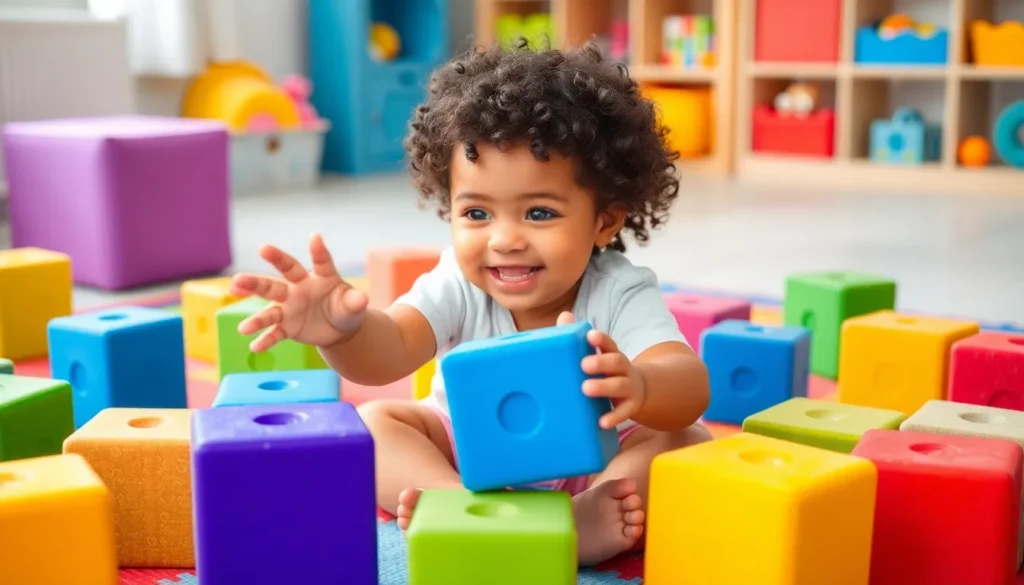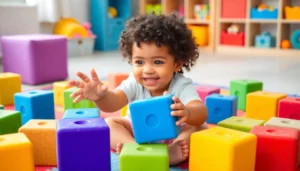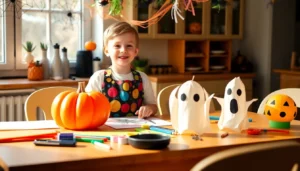When it comes to baby toys, soft blocks are the unsung heroes of playtime. These squishy wonders not only entertain but also double as mini workout equipment for tiny hands. Imagine a world where your baby can stack, tumble, and explore without the risk of a surprise head bonk. It’s like giving them a gym membership, minus the monthly fee and the sweaty gym socks.
Soft blocks aren’t just about fun; they’re also a smart choice for developmental growth. As babies learn to grasp, stack, and knock down their colorful towers, they’re honing essential motor skills. Plus, with their vibrant colors and various textures, these blocks keep little ones engaged while sparking their curiosity. So, if you’re on the hunt for a toy that’s safe, educational, and oh-so-entertaining, soft blocks might just be the answer to your parenting prayers.
What Are Soft Blocks for Babies?
Soft blocks for babies represent a safe and engaging toy option designed specifically for infants. Made from lightweight, squishy materials, these blocks allow for easy handling by small hands. Vibrant colors attract babies’ attention, stimulating visual development and curiosity. Various textures on the blocks enhance tactile exploration, encouraging sensory engagement.
Not only do soft blocks entertain, but they also support essential motor skill development. Stacking blocks helps babies practice hand-eye coordination while promoting problem-solving abilities. As infants explore different shapes and sizes, they gain an understanding of spatial relationships and balance.
Parents appreciate the safety features of soft blocks, which often include BPA-free and non-toxic materials. Such features ensure that babies can safely chew and manipulate the blocks without risk. Durable construction withstands typical wear, providing long-lasting enjoyment. Many soft blocks come in sets, allowing for various play scenarios and encouraging sharing among siblings or friends.
These toys often foster social interaction during playtime. Babies might develop sharing skills and cooperative play habits as they engage with caregivers or peers. Learning through play remains a key aspect of early development, and soft blocks facilitate this process effectively.
With numerous options available, parents can find soft blocks in different styles to suit their baby’s preferences. Some blocks feature additional elements like crinkly textures or sound effects, further enriching the play experience. As an ideal toy for developmental growth, soft blocks remain a popular choice among parents seeking engaging, safe, and educational toys for their little ones.
Benefits of Soft Blocks for Babies
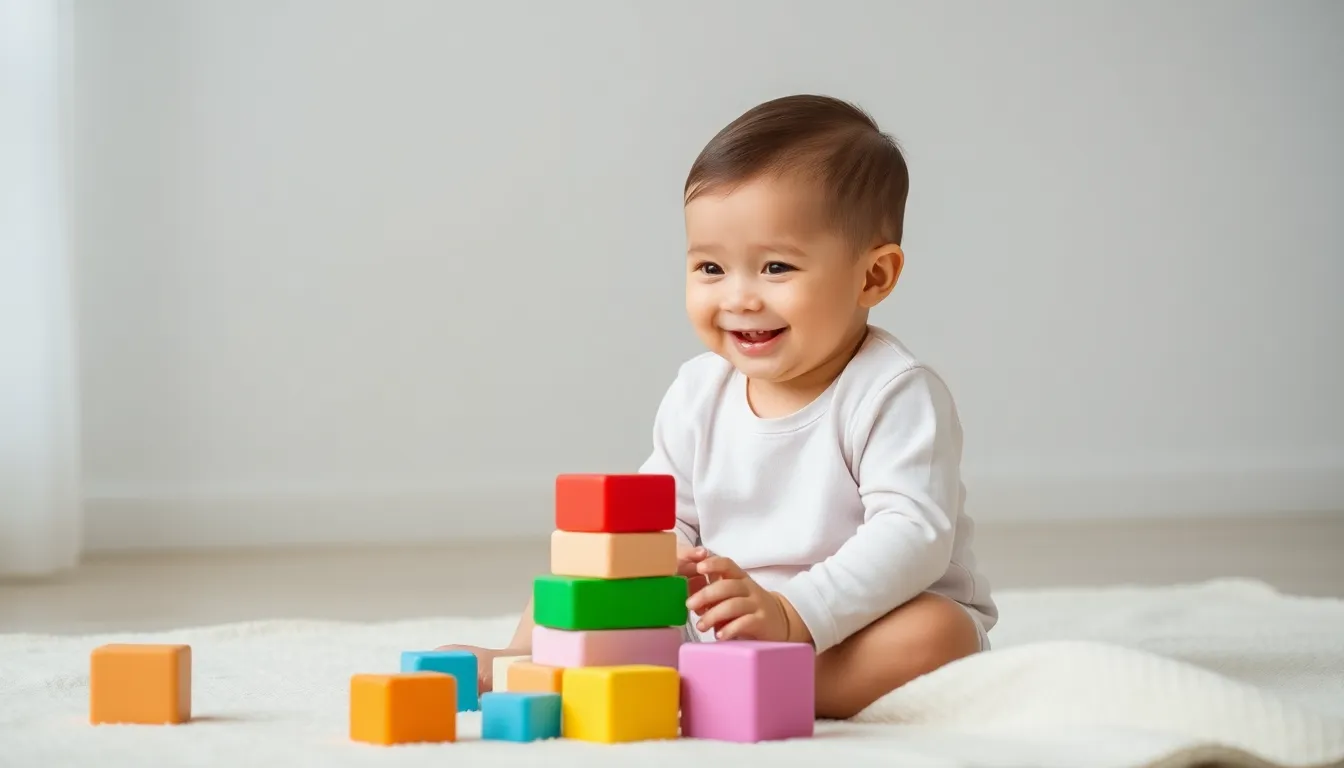
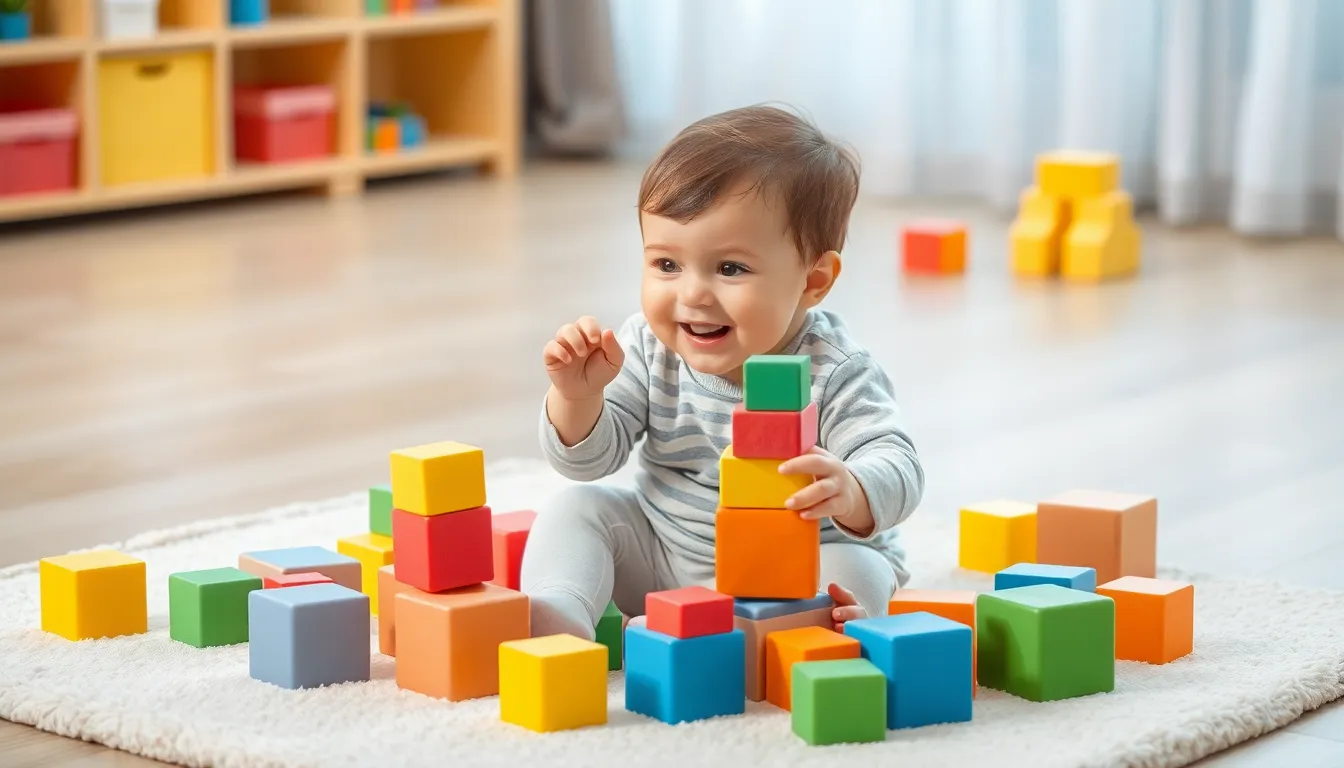
Soft blocks provide numerous advantages for babies, particularly in developmental growth and safety features.
Developmental Skills
Soft blocks enhance the development of motor skills in infants. Stacking these colorful blocks promotes hand-eye coordination, allowing babies to improve their grasping and balancing abilities. Engaging with various shapes and textures encourages sensory exploration, which fosters cognitive growth. Problem-solving skills also develop as babies figure out how to stack and balance blocks without them toppling over. Furthermore, these activities lay the groundwork for understanding spatial relationships, essential for later learning.
Safety Features
Safety remains a top priority with soft blocks. Many blocks are crafted from lightweight, non-toxic materials, ensuring they are safe for infants to handle. BPA-free construction adds an extra level of assurance for parents concerned about harmful chemicals. The durable design means these toys withstand frequent play while reducing the risk of accidental injury. Soft edges and lightweight characteristics contribute to safe exploration, allowing babies to play without harm.
Types of Soft Blocks
Soft blocks for babies come in various types, each designed to engage infants while promoting developmental skills. Different styles offer unique features and benefits that cater to babies’ needs.
Fabric Blocks
Fabric blocks consist of soft, plush materials that are safe for babies to handle. Often filled with lightweight stuffing, these blocks are easy for small hands to grip and manipulate. Many fabric blocks include crinkly textures or squeaky sounds, adding sensory elements that captivate infants. These toys frequently feature bright colors and diverse patterns, enhancing visual stimulation. Caregivers appreciate that fabric blocks are machine washable, ensuring easy cleaning after playtime.
Foam Blocks
Foam blocks provide a lightweight option for babies to explore. Made from soft, cushioned foam, these blocks are designed to withstand rough handling and stacking. Their soft design minimizes the risk of injury, allowing babies to practice stacking without concern. Many foam sets include different shapes and sizes, encouraging creativity and imaginative play. Parents value that they’re often waterproof and easy to clean, making these blocks suitable for both indoor and outdoor use.
Interactive Blocks
Interactive blocks combine traditional soft block benefits with engaging features. These blocks may include sound effects, lights, or textured surfaces that stimulate sensory exploration. By incorporating interactive elements, these blocks encourage babies to discover cause and effect through play. Often designed to be lightweight and safe, interactive options motivate infants to explore independently. Parents find that these toys not only entertain but also enhance cognitive skills as babies learn through play.
How to Choose the Right Soft Blocks
Choosing the right soft blocks involves several key factors that contribute to safety, engagement, and developmental benefits. Consider material types first. Non-toxic, BPA-free materials ensure safety for infants during play. Soft blocks made from fabric or foam offer distinct advantages suitable for various preferences.
Evaluate the size of the blocks next. Smaller blocks are easier for tiny hands to grasp, while larger ones promote stacking and balance practice. Blocks should fit comfortably within a baby’s grasp to enhance their motor skill development effectively.
Color and texture also play significant roles in selection. Bright colors attract a baby’s attention. Various textures can stimulate sensory exploration, increasing engagement during playtime. Ensure the blocks have diverse features that captivate curiosity and promote interactive play.
Look for durability as well. Soft blocks should withstand rough handling but remain lightweight. Durable construction correlates with safety, minimizing the risk of injury.
Lastly, assess the additional features of the blocks. Some options include crinkly textures or sound effects, enhancing the sensory experience. Interactive elements boost cognitive skill development through play, making them more engaging for infants.
Reviewing these aspects ensures a well-rounded selection of soft blocks that support a baby’s developmental journey while providing safe and stimulating play experiences.
Soft blocks stand out as an essential toy for infants. Their combination of safety and developmental benefits makes them a top choice for parents. By encouraging motor skills and sensory exploration, these blocks help babies learn through play.
With a variety of shapes, colors, and textures available, soft blocks cater to different preferences and developmental needs. Their lightweight and durable design ensures that little ones can enjoy countless hours of fun without the worry of injury.
Investing in soft blocks not only supports a child’s growth but also fosters social interaction and creative play. As babies stack, explore, and share, they’re building a foundation for future learning and development.

